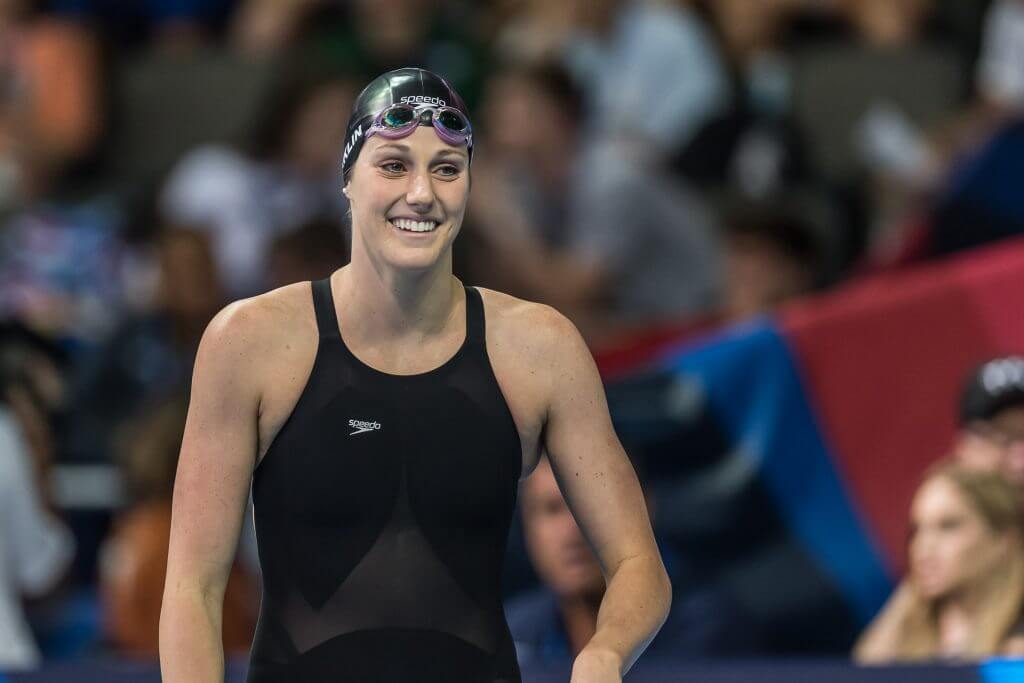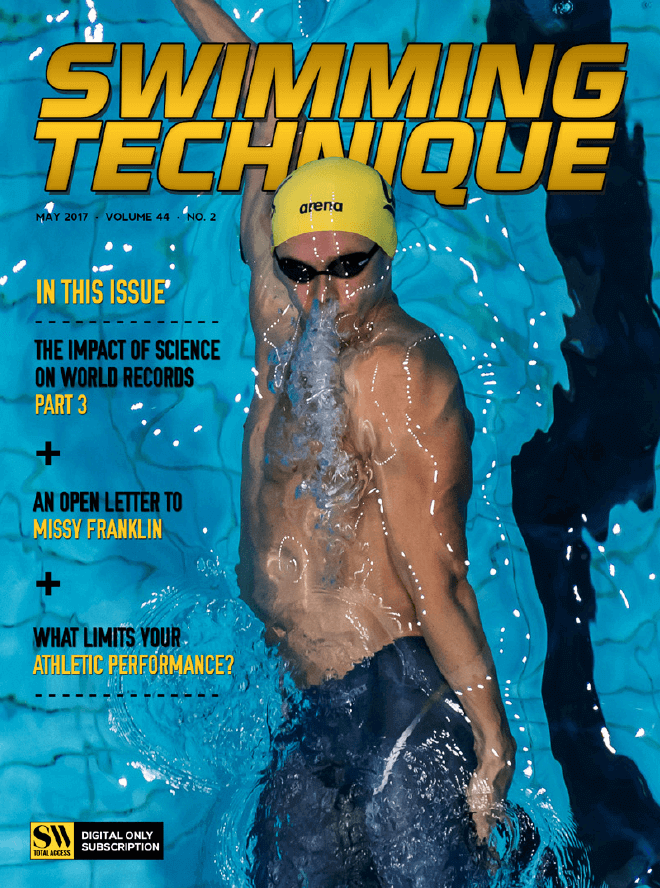“An Open Letter to Missy Franklin,” Available in Swimming Technique!

An Open Letter to Missy Franklin (…and all other swimmers with shoulder injuries)
Excerpt by Dr. Rod Havriluk
Dear Missy,
I’m writing this letter to you for three reasons.
First, to commend you for publicizing your recent double shoulder surgery. As a high-profile elite athlete, many swimmers can benefit from your story. Shoulder injuries are extremely common in swimmers. (According to more than 30 studies, if someone swims through college, there is better than a 50-50 chance of shoulder injury.) Your case is exceptional in that your condition required surgery on both shoulders.
Second, to offer technique adjustment options so that you can successfully return to competition. Although surgery can repair damage, a condition such as yours—and that of many other swimmers—also needs attention to the cause of the damage.
And third, to use your experience as a call to action. Too many young and promising swimmers are leaving the sport unnecessarily for just this reason. In my own experience, swimmers—even as young as 9 years old—have come to me for help with shoulder problems. I believe that it’s time to attack this generally correctable, but often career-ending issue.
Please allow me to explain…
Dr. Rod Havriluk is a biomechanist who specializes in swimming technique and is president of Swimming Technology Research. He has written many articles for Swimming World and was named one of the top ten people with the greatest impact on swimming in 2015. He serves on boards for the Counsilman Center for the Science of Swimming; the International Swim Coaches Association; and the Journal of Swimming Research. His research focuses on three primary areas: optimizing technique, preventing shoulder injuries, and accelerating skill learning.
To read the full letter, check out the newest issue of Swimming Technique available now! The issue is FREE to Total Access Subscribers. Non-Subscribers can click here to download for $5.95. Not a Total Access Subscriber? Click Here To Learn More.
Not a subscriber? Swimming World gives you unlimited access to all online content on SwimmingWorldMagazine.com and access to all of the back issues of Swimming World Magazine dating back to 1960! To Access everything in the Swimming World Magazine Vault, Subscribe With This Special 3-Year Offer!

In Swimming Technique Magazine, we are dedicated to bringing you the best information in the areas vital to better swimming and coaching. We’ve broken down our content into seven categories: mental preparedness, technical, nutrition/recovery, training, environment, strategy/tactics, and science and innovation.
FEATURES
08 | LESSONS WITH WAYNE
by Wayne Goldsmith
Good science or bad science—what’s the difference?
10 |THE HIGH-PERFORMANCE SWIMMING COACH AS A LEADER: MOTIVATING ATHLETES
by Paul Robbins
It goes without saying that a High-Performance Swimming Coach is a leader and, hence, a primary source of motivational influence for his/her athletes…
12 |THE IMPACT OF SCIENCE ON WORLD RECORDS IN SWIMMING: Part III—When Will the Second Scientific Revolution Begin?
by Rod Havriluk and Tyler Gambill
This article (Part III and the final part of this series) presents recent efforts to reinvigorate the application of science and existing barriers, and offers suggestions for the future…
18 | WHAT LIMITS ATHLETIC PERFORMANCE?
by Joe Zemaitis
It’s a simple question that speaks to every coach in every sport. If a coach is trying to develop athletes to a previously unattained level of performance, what must happen?
24 | AN OPEN LETTER TO MISSY FRANKLIN (…and all swimmers with shoulder injury)
by Rod Havriluk
Dear Missy,
I’m writing this letter to you for three reasons. First, to commend you for publicizing your recent double shoulder surgery. As a high-profile elite athlete, many swimmers can benefit from your story. Shoulder injuries are extremely common in swimmers…
28 | CONCEPTS IN CARDIAC OUTPUT DEVELOPMENT AND PERFORMANCE DEVELOPMENT
by Emma Swanwick and Martyn Matthews
The swimming coaches’ “holy grail” is to optimize training and development activities by individualizing their program for each athlete on their team. However, it is difficult at best to design and deliver individualized training programs…
36 | A PRACTICAL GUIDE FOR SWIMMING COACHES TO INCORPORATE BIOMECHANICS INTO THEIR TRAINING AND PROGRAMMING
by Jodi Cossor
When you watch any swimming race, it is clear to see the difference between the good and the great—the best move with the water, while the rest fight the dense and unnatural environment…
40 | TAKE YOUR MARK…
by Joe Johnson
A visual guide to the art of the race start.
42 | TECHNIQUE TIME MACHINE: The AquaZoids
by Brent Rutemiller
Technique Tips
16 | BREASTSTROKE RECOVERY
17 | FREESTYLE BODY ROTATION
22 | BACKSTROKE BREAKOUT
23 | BACKSTROKE HEAD POSITION
34 | BUTTERFLY HEAD POSITION
35 | BE A GOOD TEAMMATE




Patty Eppingher
For years I was told that the reason of Missy Franklin’s poor performances is the back muscles spasm that’s happened long time ago back into summer of 2014. Forget about it. Now we have a better and nobler excuse: shoulder surgery.
Mireia Belmont Garcia had serious issues with her shoulders that caused her skipping any competition in 2015 including WC. She returned back to stay on Olympic podium. No open letters were required.
I quit swimming early because in grade seven I had burnt out and wanted nothing to do with competition anymore. My knees where ruined from whip kick in breast stroke and running on a pavement track at the pool. If a proper training session would have been put in place with more emphasis on injury prevention, maybe I would have stayed through high school and later college.
Kelly ‘Kp’ Pierson
Love this!
Thought of you right away when I saw this.